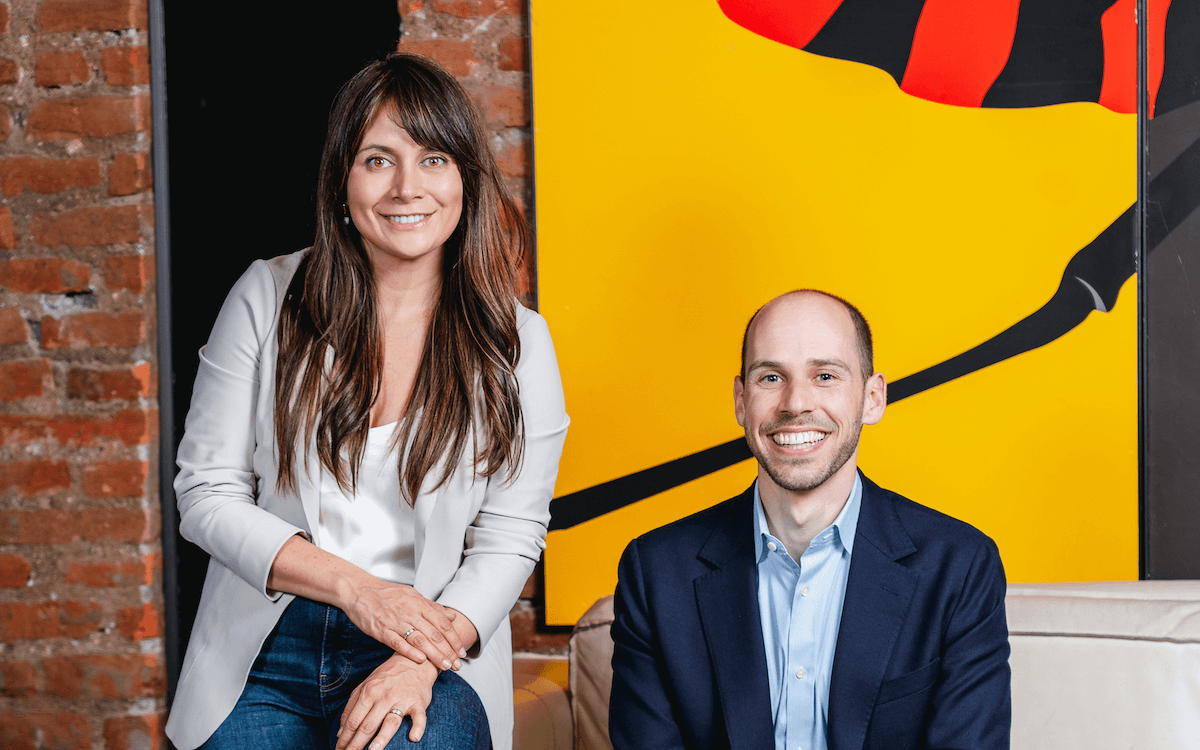By Dennis Price and David Bank
To get to a trillion dollars, much less tens of trillions, you first have to get to $1 billion.
At the Rockefeller Foundation, the hunt is on for 10 innovative financial structures that can mobilize at least $1 billion each for sectors key to meeting the Sustainable Development Goals.

Call them “SDG-finance unicorns,” in the spirit of startups worth more than $1 billion. Such innovations would do more than directly finance solutions to energy access in Sub-Saharan Africa, restoring natural infrastructure and other challenges key to the global goals. They would establish blueprints that can be used to replicate similar financial solutions in other areas and other geographies.
As much as $70 trillion may be needed to implement the SDGs over the next decade. Current rates of public and private investment rates in health, education, energy and other SDG-aligned sectors fall short by about $2.5 trillion short each year.
That is a big lift. But the gap represents only a small fraction of the estimated $290 trillion managed by pension funds, insurance companies, sovereign wealth funds and other institutional investors. Households and retail investors have also demonstrated an appetite for investments that combine financial returns with social impact. That suggests that financial structures that meet the needs of private investors while making measurable progress toward the global goals are essential in bridging the SDG financing gap.
Zero Gap
Closing the gap in SDG finance is the goal of Rockefeller’s innovative finance initiative. The “Zero Gap” portfolio has backed the design and testing, as well as the sharing, of more than 30 new financial structures. The goal is to find more vehicles like green bonds, which are expected to raise more than $120 billion in 2017. Another earlier financial innovation, social impact bonds, have so far fallen short of the $1 billion mark, but have raised $322 million across about 90 projects tackling social issues like homelessness, worker training, education and prison recidivism in 19 countries.
Among the current experiments in Rockefeller’s portfolio is a micro-levy on bottled water to finance water access, sanitation and hygiene projects. Others create insurance products to transfer risks of climate disasters and disease outbreaks from the public sector and citizens and onto to capital markets. Pay-for-success vehicles are being tested to finance forest restoration and small-business growth capital.
“The industry needs new financing mechanisms for capital to flow, but how can that happen if nobody is focused on those mechanisms?” asks Saadia Madsbjerg, the managing director who leads Rockefeller Foundation’s innovative finance efforts.
Her colleague Lorenzo Bernasconi, who leads the Zero Gap portfolio, suggests an answer: “Philanthropy has an important role to play in driving the innovation of these new mechanisms which are often seen as too risky or too small by traditional asset managers or intermediaries.”
The trick is to wrap sometimes-complex underlying projects in the kind of standardized, easy-to-execute and low-cost solutions that the capital markets want. Such vehicles must also have the ability to absorb billions of dollars, to make it worth the while of institutional investors like pension funds and insurance companies to do the work to add new products to their portfolios.
And most importantly, Madsberg says, the vehicles must present attractive financial returns based on their economic merits alone. “Blended finance” structures in which subsidies of philanthropic or other concessionary capital are used to attract commercial capital can be important in early stages, but projects must ultimately be able to grow without subsidy.
“There simply isn’t enough concessional capital available to subsidize returns at scale,” Madsbjerg and Bernasconi wrote in a recent post.
Financial levers
Risk reduction — and risk transfer — is key. Rockefeller backed the Nature Conservancy to design an insurance mechanism to protect the Mesoamerican Reef off Mexico’s Mayan Riviera around Cancun. The $215 billion Swiss reinsurer, Swiss Re, quantified the climate risks for hotels that get storm protection from the reef. For every meter of height the reef loses, potential economic damage from hurricanes triples. Under the policy, the reinsurer will make quick payouts after storms for repairs to the reef and beaches. The healthier the hotel owners keep the reef, the lower their insurance costs.
Such policies have could be helpful in the more than two dozen countries protected by and dependent on coral reefs. The model could also be used for mangrove forests and coastal wetlands, says The Nature Conservancy’s Kathy Baughman McLeod.
Similarly, the Extreme Climate Facility’s insurance product lets participating African nations tap a pool of capital after extreme weather events. States pay premiums into the insurance pool, managed by the African Risk Capacity, and receive quick payouts based on an objective index that tracks frequency and intensity of weather events. Countries then use the payouts to fund adaptation and resilience projects.
Such catastrophic insurance helps countries attract private investment in climate-vulnerable sectors like agriculture. ARC securitizes the facility’s financial obligations over a three-to-five year period and issues bonds to private investors. Donors support the bonds’ coupon payments to investors, leveraging public capital to access larger private funds. To date, ARC has issued $370 million in drought insurance and hopes to grow its membership from seven to more than 20 members. Rockefeller and ARC also are working on an outbreak and epidemic insurance product.
Last week, Mirova formally launched the $300 million Land Degradation Neutrality Fund. One of the first privately managed funds to take aim at large-scale land restoration and land degradation avoidance, the fund targets of Sustainable Development Goal №15 (Life on land). The fund was developed jointly with the United Nations and will leverage public money to raise private capital to invest in sustainable agriculture and forestry, as well as green infrastructure and ecotourism. The European Investment Bank, France’s AFD, Canadian pension fund FondAction and the government of Norway are backing the fund.
“Rehabilitating degraded land, protecting vital ecosystems and empowering sustainable business around the world,” Philippe Zaouati, CEO of Mirova, an $8 billion unit of Natixis Global Asset Management, said in a statement, “can be achieved along with competitive market-level returns.”
Investor capital will be complemented by a pool of donor funds, or risk capital as the Rockefeller folks call it, that will build and support a pipeline of bankable projects. According to a profile, the fund aims to restore at least 12 million hectares of degraded land per year, “effectively achieving a land degradation neutral world.”
Investor mindset
To be sure, financial innovations require tinkering, and persistence. The Impact Investment Trust, developed by 18 East Capital, in June fell just short of its minimum fundraising target in its first attempt at an initial public offering to list on the London Stock Exchange. The trust is aiming to raise $150 million to invest in about a dozen funds targeting small- and medium-sized enterprises in emerging markets, giving small retail investors, as well as large institutions, a way to invest in private companies with the liquidity of a publicly-listed vehicle.
By tapping public markets for cash, the trust effectively makes illiquid investments liquid for broad stock-market investors. Development-finance institutions have for decades seeded emerging market funds targeting ventures in “high-impact sectors” such as education, healthcare, distributed energy, basic infrastructure, agriculture and forestry and financial services and job creation. That has created a series of fund managers who know how to operate in these markets. But access to these funds has been limited to investors large enough to handle the high minimums, little liquidity and 10-year (or longer) horizons. “We proved there is a market on the retail-individual side,” 18 East’s Thomas Venon told ImpactAlpha. “We can guarantee the catalytic effects.”
18 East will try again to list on the exchange early next year. Venon said hundreds of individual retail investors were interested in the product, even if it fell short on the first try. “When you bring something new to the market, there’s higher risk than when you launch a me-too product,” Venon said.
Not all of the experiments in Rockefeller’s portfolio will make the jumps from pilot projects to market launch to replicable scale. Those that do could channel billions toward SDG-aligned sectors that are primed for an influx of capital. They may also accelerate what Madsbjerg and Bernasconi call a change in mindset from traditional development aid and grants.
“For any innovative finance mechanism to be successful, relevant stakeholders including NGOs, governments, and donors need to take on an investment mindset,” they say, “and have the on-the-ground capacity to deliver with the discipline and rigor that the capital markets require.”












